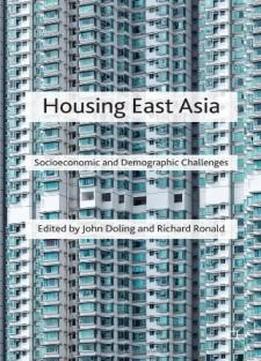
Housing East Asia: Socioeconomic And Demographic Challenges
by John Doling /
2014 / English / PDF
6.3 MB Download
Housing and home ownership has been strongly embedded in East
Asian socioeconomic and policy models. Based on the primacy of
national economic growth objectives, it was promoted as a means
of, on the one hand, contributing directly to economic growth
through the motor of the construction industry, and, on the
other, supporting a low-taxation, low-public-expenditure economy
with minimal social protection measures based on the support of
the family. In recent years, however, this housing pillar is
facing new social, economic, political and demographic
challenges, including a decline in the political authority of
authoritarian states, the undermining of traditional
developmental logic, fragmentation of families and household
types and the growing volatility of housing markets. Most of
these have been generated or exacerbated by intensified
globalization and economic crises in recent years.
Housing and home ownership has been strongly embedded in East
Asian socioeconomic and policy models. Based on the primacy of
national economic growth objectives, it was promoted as a means
of, on the one hand, contributing directly to economic growth
through the motor of the construction industry, and, on the
other, supporting a low-taxation, low-public-expenditure economy
with minimal social protection measures based on the support of
the family. In recent years, however, this housing pillar is
facing new social, economic, political and demographic
challenges, including a decline in the political authority of
authoritarian states, the undermining of traditional
developmental logic, fragmentation of families and household
types and the growing volatility of housing markets. Most of
these have been generated or exacerbated by intensified
globalization and economic crises in recent years.
Through contextual, conceptual and empirically focused chapters,
nine of which deal with a different country – China, Hong Kong,
Indonesia, Japan, Malaysia, Singapore, South Korea, Taiwan and
Thailand – this book explores the development of housing policies
and practices that have responded to dynamic socioeconomic and
demographic restructuring.
Through contextual, conceptual and empirically focused chapters,
nine of which deal with a different country – China, Hong Kong,
Indonesia, Japan, Malaysia, Singapore, South Korea, Taiwan and
Thailand – this book explores the development of housing policies
and practices that have responded to dynamic socioeconomic and
demographic restructuring.











